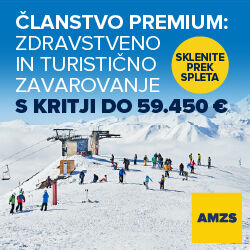This is a more advanced course for riders who have already mastered the lessons of the basic course and who expect more from themselves and their motorcycles.
During the basic safe riding course for motorcyclists, training exercises become progressively more demanding. In the advanced course, participants complete some new practical exercises that are even more demanding. All of the training exercises from the basic courses are also repeated, but at higher speeds.
This is a full day course with a one-hour break for lunch. Participants can register with their own motorcycles.
In the short theoretical component participants learn about the basics of physical laws and different types of riding and braking techniques. The instructor will discuss the importance of speed and its effect on safety as well as passive and active motorcycle safety devices.
The practical component is divided into two sections. During the first two hours, motorcyclists practice balance exercises and correct observation and scanning techniques. These exercises are carried out with special trial motorcycles that are provided by the AMZS Safe Driving Centre. In the second part, participants carry out exercises while riding their own motorcycles. These exercises focus on controlling the motorcycle when riding at low speed or while changing direction and riding on a bend. A strong emphasis is placed on controlling the motorcycle during skids, which participants can experience by way of a hydraulic kick plate that simulates a similar event on the road. In this way, participants can safety familiarise themselves with some of the most frequent hazardous traffic situations, learn to recognize them, evaluate them correctly and react appropriately.
Duration: 9 hours
The theoretical component includes:
- identifying and avoiding hazards,
- emergency evasion techniques,
- special motorcycle construction and design,
- tyres and their relationship to safety,
- physical laws of riding,
- speed and its effect on safe riding.
The practical component includes:
- balance exercises and correct observation and scanning techniques,
- controlling the motorcycle at low speeds,
- controlling the motorcycle in turns,
- handling skids – hydraulic kick plate,
- controlling the motorcycle while changing pace and direction,
- emergency braking, obstacle evasion, motorcycle stabilization,
- evasion and changing lanes in hazardous situations,
- riding in groups,
- riding on one and two lane roads.
Do you need more information?
Call our free number +386 80 26 36 or contact us at cvv@amzs.si.




